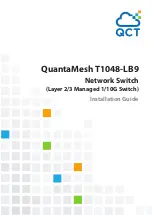
379
IMPORTANT:
MLD must be enabled on the device that acts as the receiver-side DR. Otherwise, the receiver hosts
attached to the DR cannot join any IPv6 multicast groups. For more information about MLD, see
"Configuring MLD."
Figure 114 DR election
As shown in
, the DR election process is as follows:
1.
The routers on the shared-media LAN send hello messages to one another. The hello
messages contain the DR priority for DR election. The router with the highest DR priority is
elected as the DR.
2.
The router with the highest IPv6 link-local address wins the DR election under one of the
following conditions:
All the routers have the same DR election priority.
A router does not support carrying the DR priority in hello messages.
If the DR fails, its IPv6 PIM neighbor lifetime expires, and the other routers initiate a new DR election.
RP discovery
An RP is the core of an IPv6 PIM-SM domain. For a small-sized, simple network, one RP is enough
for multicast forwarding throughout the network. In this case, you can specify a static RP on each
router in the IPv6 PIM-SM domain. However, in an IPv6 PIM-SM network that covers a wide area, a
huge amount of IPv6 multicast data is forwarded by the RP. To lessen the RP burden and optimize
the topological structure of the RPT, you can configure multiple candidate-RPs (C-RPs) in an IPv6
PIM-SM domain. An RP is dynamically elected from multiple configured C-RPs by the bootstrap
mechanism. An elected RP provides services for a different IPv6 multicast group. For this purpose,
you must configure a bootstrap router (BSR). A BSR acts as the administrative core of an IPv6
PIM-SM domain. An IPv6 PIM-SM domain has only one BSR, but can have multiple candidate-BSRs
(C-BSRs). If the BSR fails, a new BSR can be automatically elected from the C-BSRs and avoid
service interruption.
NOTE:
•
An RP can provide services for multiple IPv6 multicast groups, but an IPv6 multicast group only uses one
RP.
•
A device can act as a C-RP and a C-BSR at the same time.
Join message
Ethernet
Ethernet
RP
DR
DR
Hello message
Register message
Source
Receiver
Receiver
















































